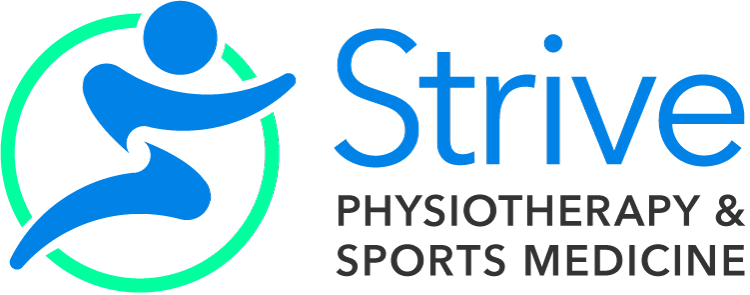A triangular fibrocartilage complex injury is the result of trauma to the wrist or degeneration due to repetitive actions. The triangular fibrocartilage complex is a load-bearing structure in the wrist which can be susceptible to tearing.
What causes TFCC Injuries? What are common symptoms?
The TFCC is commonly injured due to repetitive or forced loading in supination, pronation, radial, or ulnar deviation of the wrist.
There are two types of TFCC injuries: Type 1 due to trauma and Type 2 due to degeneration.
Common symptoms include:
- Ulnar-sided wrist pain
- Pain worse with compression of the wrist, such as doing a push-up
- Pain and/or weakness with gripping
- Clicking or popping in the wrist
- Feeling of instability in the wrist
How can physiotherapy help my TFCC Injury?
To treat your TFCC injury, your physiotherapist will first conduct a thorough assessment that looks at the position of the wrist and hand at rest and with movement. They will rule-out the possibility of fractures in the wrist and hand. Based on this assessment, they will implement the most appropriate initial treatment options to promote the healing of your tear. Your early treatment will focus on protecting the injured TFCC from re-aggravation while creating an optimal environment for the tissue to heal. Your Strive physiotherapist may employ manual therapies such as massage and mobilization. They may also use techniques such as bracing and taping for support and acupuncture or dry needling for pain control.
How can massage therapy help my TFCC Injury?
Massage therapy can also be used to treat both the direct and indirect causes of your TFCC pain. Your Strive Massage Therapist will work on a broad area of muscles contributing to your symptoms, helping to address compensations in the hand, wrist and elbow that are contributing to your pain. At Strive we work as a team. Your Massage Therapist will communicate with your Physiotherapist to ensure both members of your team are working together to help you get back to your normal.
How can sports medicine/physiatry help my TFCC Injury?
In most cases, the conservative management described above is the first choice for those with TFCC injuries to help overcome symptoms and return to your regular activities pain-free. However, in some cases you may need to see a sports medicine physician. Your Strive Physiatrist and Sports Medicine Physician can order imaging, such as an ultrasound, to determine if there are underlying factors that may slow down the healing process. They can also perform various specialized injections such as cortisone or Platelet-Rich Plasma (PRP) and provide medications both oral and topical.
How long does it take for me to recover from my TFCC Injury?
The length of recovery following a TFCC injury depends on the degree of the injury. TFCC injuries that can be managed through conservative treatment can recover between 4-6 weeks. If surgery was required recovery can take anywhere between 6 weeks to several months to regain full and pain-free use of your wrist.
How can massage therapy help my TFCC Injury?
Massage therapy can also be used to treat both the direct and indirect causes of your TFCC pain. Your Strive Massage Therapist will work on a broad area of muscles contributing to your symptoms, helping to address compensations in the hand, wrist and elbow that are contributing to your pain. At Strive we work as a team. Your Massage Therapist will communicate with your Physiotherapist to ensure both members of your team are working together to help you get back to your normal.
How can sports medicine/physiatry help my TFCC Injury?
In most cases, the conservative management described above is the first choice for those with TFCC injuries to help overcome symptoms and return to your regular activities pain-free. However, in some cases you may need to see a sports medicine physician. Your Strive Physiatrist and Sports Medicine Physician can order imaging, such as an ultrasound, to determine if there are underlying factors that may slow down the healing process. They can also perform various specialized injections such as cortisone or Platelet-Rich Plasma (PRP) and provide medications both oral and topical.
How long does it take for me to recover from my TFCC Injury?
The length of recovery following a TFCC injury depends on the degree of the injury. TFCC injuries that can be managed through conservative treatment can recover between 4-6 weeks. If surgery was required recovery can take anywhere between 6 weeks to several months to regain full and pain-free use of your wrist.
Self-Care Strategies
What can I do to treat my TFCC Injury at home?
Avoid doing the things that aggravate your symptoms but maintain pain-free movement. If it is swollen use ice to help manage the swelling and pain. Place a bag of ice, wrapped in a towel, over the swollen area to 10 minutes 2-3 times a day. Wear a brace or wrist widget to help provide stability and avoid aggravating movements.
What are the best exercises to help with my TFCC Injury?
Check out the following exercises you can use to recover in the early stages of a TFCC injury. TFCC Injury Home Exercise Program.
- AROM of the wrist for flexion, extension, radial deviation, ulnar deviation, and circumduction
- Grip strengthening
- Isometric exercises for the wrist flexion, extension, radial deviation, and ulnar deviation
Please keep in mind that these exercises were designed as a place to start to address your symptoms. These exercises should not be performed or continued if they cause or increase your pain in any way. Using these exercises for self-management of your symptoms does not replace the value of being assessed by a Health Professional. If you find you need help, let a Strive Health Professional help you, book your time today!

Grace completed her Master of Science in Physical Therapy at the University of Toronto. Before physiotherapy school she obtained a Bachelor of Computing with a specialization in biomedical applications and a Master of Science in Computing from Queen’s University. During her Physiotherapy education, Grace enjoyed clinical internships in amputee rehabilitation, paediatric neurosurgical rehabilitation, lung transplant rehabilitation, and several out-patient clinics working with patients following joint replacement and fracture, patients with Long COVID, and WSIB patients.

Grace completed her Master of Science in Physical Therapy at the University of Toronto. Before physiotherapy school she obtained a Bachelor of Computing with a specialization in biomedical applications and a Master of Science in Computing from Queen’s University. During her Physiotherapy education, Grace enjoyed clinical internships in amputee rehabilitation, paediatric neurosurgical rehabilitation, lung transplant rehabilitation, and several out-patient clinics working with patients following joint replacement and fracture, patients with Long COVID, and WSIB patients.
Pedorthic Visits:
-
$55
-
Pedorthic Consultation
- 30 Minutes
-
$90
-
Pedorthic Assessment
- 60 Minutes
Effective January 1st 2020
Pedorthic Visits:
-
$55
-
Pedorthic Consultation
- 30 Minutes
-
$90
-
Pedorthic Assessment
- 60 Minutes
Effective January 1st 2020
Custom Foot Orthotics:
-
$550
-
Basic Initial Pair
- (This is your starting pair of orthotics)
-
$375
-
Subsequent Pair
- (Within 3 Months)
Custom Foot Orthotics:
-
$550
-
Basic Initial Pair
- (This is your starting pair of orthotics)
-
$375
-
Subsequent Pair
- (Within 3 Months)


